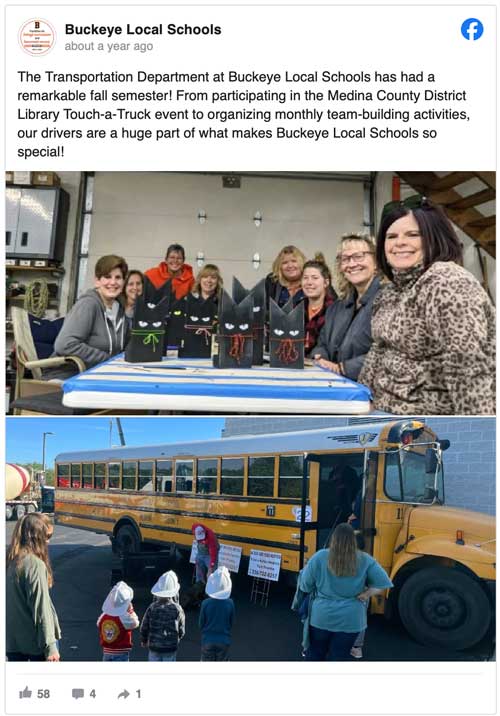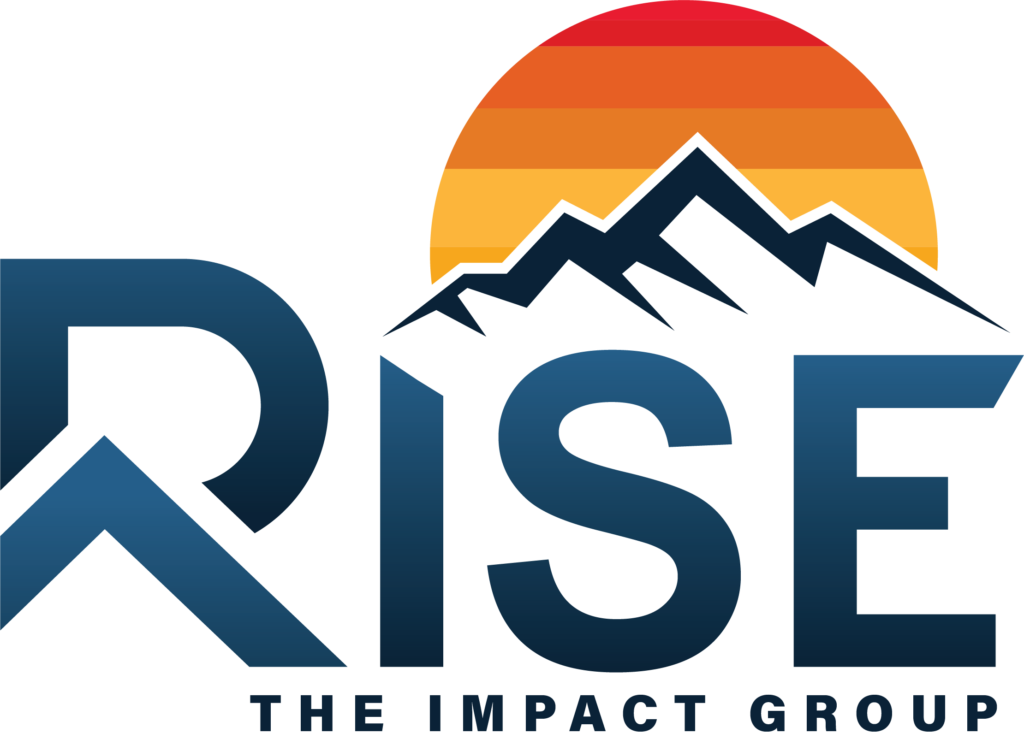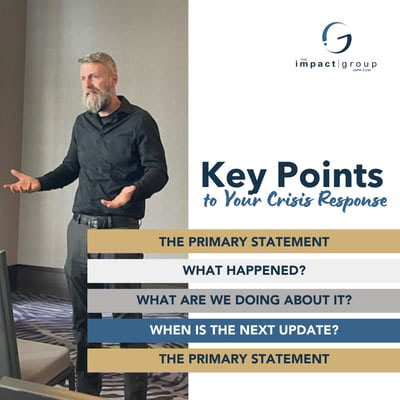Communication Trends to Watch in 2025
It’s that time again—a new year is here, and that means fresh communication trends, big shifts, and more creative opportunities to keep audiences engaged.
As we enter a new year, leaders of every industry are navigating a dynamic communication environment. New trends and shifts in strategy are creating opportunities to engage stakeholders more effectively, build stronger community connections, and drive meaningful outcomes.
From technology to social strategy, understanding these shifts is no longer optional—it’s essential. This blog explores key communication trends to watch in 2025, providing actionable insights and strategies designed to help leaders succeed in an increasingly complex world.
1. Engaging Audiences Through Creativity and Connection
As a society, we are inundated with information, making connecting with stakeholders more difficult. By remaining authentic and professional in today’s fast-paced communication landscape, organizations are more likely to break through the noise.
Platforms like social media are driving creative trends and the need for authenticity. In 2025, leaders in public sectors can differentiate themselves by embracing unique messaging styles that reflect their organizational values and goals.
Consider these strategies:
- Develop a distinct voice. Craft messages that resonate with your community while reflecting your organization’s personality. Whether serious or lighthearted, ensure the tone aligns with your audience and purpose.
- Engage meaningfully through storytelling. Share stories and insights that educate and inspire. Thoughtful content that prioritizes connection over promotion will naturally draw interest and increase your overall engagement.
- Have fun when appropriate. While professionalism is key, don’t shy away from a lighthearted approach where it makes sense—especially in settings like social media that encourage interaction. People go to social media to be entertained, and by creating entertainment that is designed to do so will increase engagement.
According to Hootsuite’s Social Media Trends 2025 Survey, “Nearly half of our survey respondents said that more than 60% of their social content aims to entertain, educate, or inform without directly promoting themselves, their products, or services.”
School districts and government entities can create content aligning with this trend through storytelling or by highlighting individuals, staff members or students by aligning social media content with a trending sound or theme.
Here is one example from Buckeye Local School District about the Transportation Department that highlights how a simple post appreciating the recent participation of the Transportation Team in a Touch-a-Truck event can engage your social media audience.
Building Relationships Through Active Engagement
Communication is not a one-way street. The most successful leaders in 2025 will learn how to proactively engage with their audiences, fostering a sense of trust and collaboration.
Here’s how to make an impact:
- Join the conversation. Don’t just wait for people to reach out—seek opportunities to interact during in-person events or even the comment section of social platforms where stakeholders are already active. Through responsive communication and positive engagement, you will build trust with your community.
- Be timely and relevant. Respond promptly to questions, comments, or concerns to show that your organization values dialogue and transparency. Keeping a customer-service mindset throughout your organization will help improve the overall outcomes of these efforts.
- Prioritize authenticity. People are quick to spot insincerity. Approach every interaction with genuine interest and a commitment to adding value. Staying focused on your mission and rooted in your why makes authenticity easier when responding and communicating with your stakeholders.
By adopting these principles, school districts and government leaders can enhance their communication strategies, deepen stakeholder trust, and strengthen their community connections.
2. Social Listening: Do You Have a Tool to Listen on Social Media?
For school districts, boards of developmental disabilities, and local government leaders, staying informed about public sentiment is vital—especially during crises or when addressing community concerns.
Social listening tools, like Hootsuite, Brandwatch, Meltwater and Google Alerts, offer a powerful way to monitor conversations, track trends, and respond effectively. They provide actionable insights that can strengthen communication strategies—and they will be more vital than ever in 2025.
Why Social Listening Matters
Social listening goes beyond simply knowing “what are people saying about us?” It allows organizations to gain real-time insights into stakeholder sentiment, emerging issues, and relevant community conversations. This can be particularly beneficial in situations such as:
- Crisis Communication: Quickly identifying and addressing concerns can help minimize misunderstandings and build trust during challenging times. (Learn how IGPR can assist with your crisis communication strategy in 2025 here.)
- Spotting Trends: Monitoring conversations can reveal emerging topics or community needs that might shape future messaging or policies.
- Improving Outreach: By analyzing feedback, organizations can adjust communication strategies to resonate better with their audiences.
Practical Tips for Public Sector Leaders
While smaller organizations may not see immediate results with standalone listening tools, pairing them with other resources can enhance their effectiveness:
- Use listening tools as part of a broader strategy. Combine data from social listening with input from surveys, emails, and public forums for a fuller picture of community sentiment.
- Focus on relevant metrics. Pay attention to conversations that directly impact your goals, such as feedback about a policy, program, or local initiative.
- Act on insights. Listening only adds value when paired with action—use what you learn to refine your communication strategies and respond meaningfully to your audience.
By integrating social listening into your communications toolkit, you can stay informed, adapt quickly, and build stronger connections with the communities you serve.
3. AI Integration: A Strategic Ally for Communications
Artificial intelligence is no longer a futuristic concept—it’s a powerful tool that’s transforming how organizations communicate and connect. In 2025, AI will continue to offer opportunities for school districts, boards of developmental disabilities, and local governments to streamline operations, enhance engagement, and make data-driven decisions that benefit their communities.
How AI Supports Content and Communication
AI tools can assist in creating content and managing routine tasks, freeing up time for leaders to focus on big-picture goals. Practical applications include:
- Drafting messages and documents. From crafting newsletters to preparing reports, AI can provide a solid starting point, saving time and effort. It can also be a useful tool in editing and proofing final documents for spelling and grammar.
- Translation and accessibility. AI-powered tools make it easier to translate materials and ensure communications are inclusive for diverse audiences. The Impact Group is helping our clients by using tools that utilize AI avatars to create videos in multiple languages quickly and easily, so things like registration and onboarding can be for non-English speaking stakeholders.
- Analyzing community feedback. When processing large volumes of data, AI can identify patterns in stakeholder feedback, helping leaders prioritize issues and refine their messaging quickly.
AI is not a replacement for human insight and creativity—it’s a collaborative tool that enhances them. Organizations that embrace AI as a part of their 2025 communications strategy will be better equipped to adapt, innovate, and meet the needs of their audiences.
Bonus Tip: Try Out Short-Form Videos
Utilizing short-form video remains one of the most effective ways to capture attention and engage diverse audiences, and video continues to be a growing platform for communication and marketing efforts. Whether you’re addressing students, families, or the broader community, videos that are concise, informative, and engaging can leave a lasting impact.
Here are a few ways to make short-form video work for your organization in 2025:
- Educational Content. Share quick how-tos, program highlights, or important updates in an easily digestible format.
- Behind-the-Scenes Moments. Offer a glimpse into your day-to-day operations, whether it’s preparing for an event or introducing team members.
- Community Highlights. Showcase local stories, partnerships, or initiatives that strengthen connections with your audience.
- Using Long-Form Content. Turn longer videos, articles or other forms of content into short clips and videos and make content creation easier. Tools like Opus Clip and CapCut can make the editing process even quicker!
Short-form video is adaptable and effective across platforms like YouTube Shorts, Instagram Reels, and Facebook Stories. With a focus on creativity and authenticity, these videos can help organizations connect meaningfully with their audiences.
Did You Know?
Video consumption made up 82% of all internet traffic in 2022.
Looking Ahead
As we move into 2025, organizations that embrace innovation and stay attuned to their audience’s needs will be positioned for success. By integrating new tools like AI, leveraging real-time insights, and engaging through dynamic content such as short-form video, schools, boards, and government leaders can build trust, foster collaboration, and make lasting connections.
The future of communication is about being adaptive, authentic, and open to opportunities—now is the time to lead the way.
Start your Communications Consultation today
Schedule a meeting with Tom Speaks and our team to learn more about Communications.





